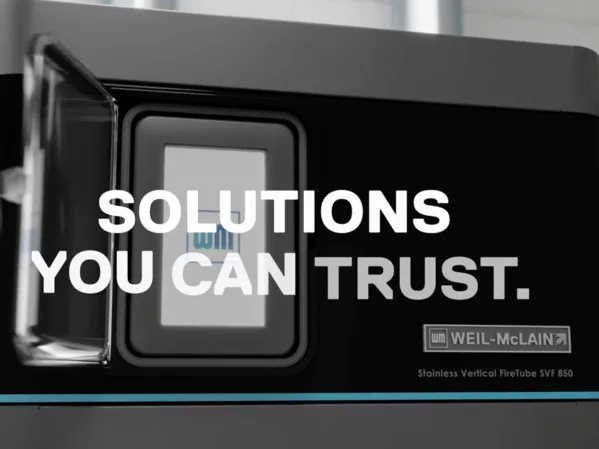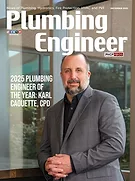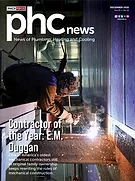I’ve been an early adopter all my life; I enjoy concepts and pulling on a thread to find whatever lies on the other end. My name is John Addison Mullen, and I am a plumber by trade and an enthusiast of sorts for finding symmetry between technology and our natural world. As a builder of complex systems for most of my career in plumbing and mechanical, I always look forward to new opportunities for our craft to continue to evolve our modern world, with sustainability at the tip of the spear.
Plumbers and pipefitters have been responsible for constructing the world around us and providing sanitation and comfort in the most technical ways. Purveyance of media through pipe is what our systems do best. In fact, now they can do whatever we tell them to, with integration between technology and piping networks.
In a landscape of natural resources lies the untapped potential of water in our mission for sustainable building practices. It’s a shift in how we harness nature’s laws to create spaces that are efficient but also in harmony with occupants.
Entropy: Opportunity Between Chaos and Order
At the core is the second law of thermodynamics, sometimes referred to as entropy, often misunderstood as simply disorder. Entropy is how our universe spreads energy around, ensuring that it doesn’t cluster up but flows where needed in a laminar fashion.
In the realm of hydronic building systems, this principle challenges us to rethink energy distribution and how water can be used as an energy transfer network. It’s not about fighting, forcing or prescribing this natural energy flow but ebbing with it, using entropy as an example of how we can distribute heat with ambient temperatures that are absorbed by water and transferred through a heat exchanger.
Water has a particular talent for going with the flow, and it’s about time we started to use its full power and potential by circulating water and not wasting it. It’s a ripe opportunity for new communities to embrace what the next environmental neighborhood could do for its citizens, making waste heat an asset to a community’s energy use.
Radiant heating and cooling hydronic systems, in cooperation with heat pumps and exchangers, are the unsung heroes in this story. Under-floor piping systems cut through the complexity of traditional systems by doing something remarkably simple: transferring energy directly by contact.
This method, like the warmth of the sun or the coolness of the shade, is about comfort and aligning our living spaces with the way nature intended us to experience temperature and how it’s felt personally as a temperature-regulated living being.
The Heat Internet: A District System Learning Microstates
Buildings, like people, have moods, or in the language of thermodynamics, microstates. Each zone, with its unique temperature needs, represents miniature challenges in energy management. Addressing these needs isn’t only about communication technologies, it’s about understanding the logic of heat sinks and sources, ensuring that each part of a building gets exactly what it needs, only when it’s needed.
Geothermal and water-source thermal energy networks are prime examples of how we can leverage natural resources in a symbiotic way. These systems, operating on the principle of closed loops, become something more when they interact with interconnected buildings or thermal energy networks (TENs). They become part of a larger web governed by thermodynamics and transferred through exchange technologies.
It’s an amazing example of how, by working with our understood principles of nature, we can achieve efficiency, sustainability and resource sharing by allowing our current grid the ability to quite literally take a load off.
Imagine a world where buildings communicate with each other, not by data, but in warmth and coolness through piping networks. TENs make this possible. By connecting buildings in a network of shared energy, we can ensure that excess heat from one place can fulfill a need in another and act as a heat sink, similar to electronics. It’s an elegant solution to the problem of underused water and turning media such as sanitary waste or stormwater collection into an opportunity for energy sequestration.
The Future Is Water: A New Campaign
At the heart of this revolution is the idea that “water is energy.” This call to recognize water as a tool of thermal energy transfer through piping networks is undeniable. Water’s unique properties and ability to store and transfer heat make it an ideal candidate for hydronic systems using thermal energy.
By harnessing water’s energy utility in our building systems, we can significantly reduce the carbon footprint of cities and densely occupied areas. Examples of wasted energy opportunities are the capture and use of sewage wastewater, collected stormwater or even existing fire suppression systems to provide heat energy transfer or thermal storage.
As we move toward this future, our buildings become part of the solution to climate change and provide building owners the opportunity to serve energy to surrounding communities.
When cities or neighborhoods are erected, trees and ground cover (heat and carbon sinks) get removed. Shared energy networks that can sink heat back into a piping network rather than reject it into the atmosphere irresponsibly move us closer to our original design.
As we stand on the brink of a new era in community design and environmental engineering, we put nature back as the leading role. These innovations provide a future where buildings are structures and assets in an energy exchange network through connecting new environmental neighborhoods and municipal buildings. It’s an idea of a place where sustainability is a goal, and real projects get started with measurable results, making energy more circular, sustainable and affordable.
By embracing hydronic radiant systems, geothermal and TENs, we can create spaces that are more comfortable, efficient and in tune with the needs of our environment and our communities.
The future is not only about the latest electronic technology but also about understanding and working with the fundamental principles of nature. With its unparalleled capacity to store and transfer energy, water can offer a viable solution to a sustainable and resilient world.






